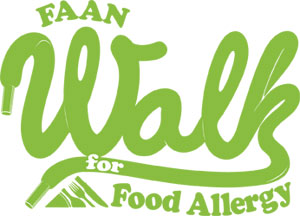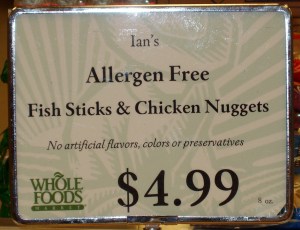 The Food Allergy Walk went well. There was a good turnout, apparently the highest yet for the Los Angeles event, which is in its fourth year. According to the event website, they raised about $43,000 of the $50,000 they had aimed for, but that’s only online donations. They may get closer once cash and checks are counted. Thank you again to everyone who sponsored us! You helped us raise $1040.05 for the cause ($120 of it offline) between the two of us!
The Food Allergy Walk went well. There was a good turnout, apparently the highest yet for the Los Angeles event, which is in its fourth year. According to the event website, they raised about $43,000 of the $50,000 they had aimed for, but that’s only online donations. They may get closer once cash and checks are counted. Thank you again to everyone who sponsored us! You helped us raise $1040.05 for the cause ($120 of it offline) between the two of us!
The route was one mile each way along the walking path behind the beach up to the Santa Monica Pier and back. It ended up being overcast and chilly, a far cry from the 77 degrees and sunny predicted a few days ago, but at least it worked out well. Afterward we went to Café Crêpe for lunch.
Funny/odd bits:
- I wore a Flash T-shirt, and Katie put a Flash shirt on J. (We had him in the stroller.) We started off the walk next to a family wearing Superman T-shirts. For the record: we finished first.
- The turnaround point coincided with the finish line of a 100-mile endurance walk/run, so on the way back we saw several thoroughly exhausted runners plugging away.
- When we arrived, a huge section of the beach parking lot was cordoned off, with a half-dozen fire trucks (at least one marked Hazmat Response or Hazmat cleanup). One truck had its ladder fully extended in the middle of the lot, and they were pressure-washing something off the pavement from the top of the ladder. We never did find out what it was.

- Not realizing how close the Third Street Promenade was (basically, we would have walked half of the route again), we moved the car afterward to one of several identical parking structures in downtown Santa Monica. This led to a strange moment as we were leaving, when we briefly thought someone had run off with the car…until we noticed that the signs said “structure two” instead of “structure four.” It also explained why the elevator we thought we had used earlier was marked “out of order.” (Hey, it seemed possible it had been closed within the last two hours.)
